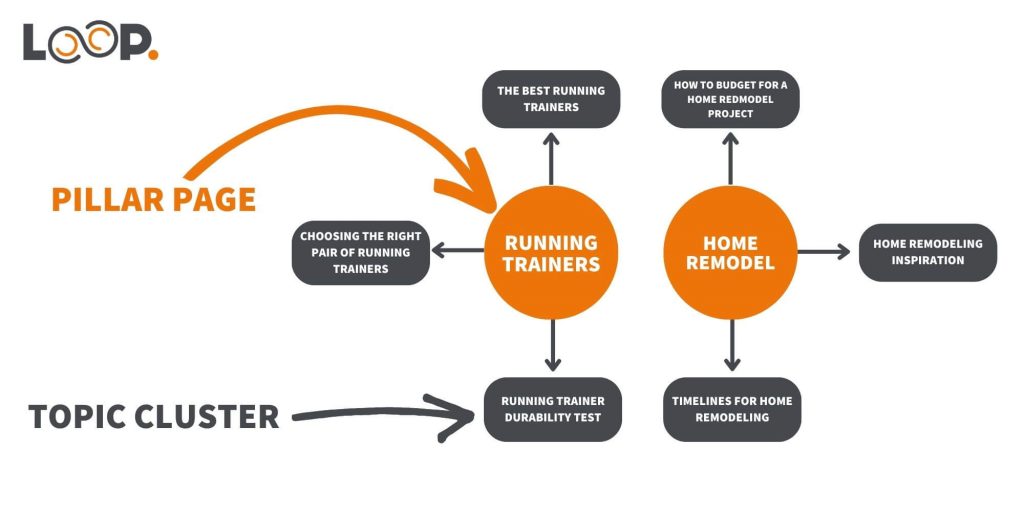Mel is our Partner Strategy & Delivery Manager and also a CIM Chartered Marketer, a testament to her commitment to excellence in the field. But Mel’s contributions don’t stop at the office door. Beyond her professional endeavours, she leads an active life as a qualified run leader and dedicated volunteer. Her experience in these roles has streamlined her leadership and teamwork skills, making her an invaluable asset when it comes to collaborating on projects and ensuring their success. Her sharp insights, strategic thinking, and knowledge have made her a backbone in our team’s ability to drive results for clients in this industry. Mel will make sure that we can approach marketing challenges from all angles and deliver outstanding results for our clients.
Posted on 01/02/2023 by Melanie Comerford
10 Steps to Building an SEO Campaign
In today’s digital age, having a strong online presence is crucial for any business looking to grow and succeed. Search Engine Optimisation (SEO) is a key component of digital marketing, allowing you to improve your website’s visibility and ranking on search engines like Google. In this comprehensive guide, we will cover everything you need to know about building a successful SEO campaign, from researching keywords and optimising your website’s content to measuring your results and making ongoing improvements.
Whether you’re a seasoned marketer or just starting out, this guide will help you develop a solid SEO strategy that drives traffic, leads, and sales for your business. Let’s get started!
What is an SEO Campaign?
An SEO campaign is a strategic effort to improve a website’s ranking on search engines like Google. The goal of an SEO campaign is to increase organic traffic to the website by making it more visible and relevant to search engine users. This is achieved by implementing various tactics such as keyword research, on-page optimisation, link building, and technical SEO, all aimed at boosting the website’s search engine visibility and credibility.
An effective SEO campaign can help a business establish a strong online presence, reach its target audience, and increase conversions and revenue. It requires ongoing effort, as search engines are constantly evolving and updating their algorithms, but the long-term benefits of a successful SEO campaign make it a valuable investment for any business looking to grow its online presence and succeed in today’s digital landscape.
What’s Included in an SEO Campaign?
An SEO campaign typically includes multiple moving parts to improve a website’s search engine ranking. Specific tactics and strategies can vary depending on the nature of the website, the target audience, and the business goals. An effective SEO campaign requires a holistic approach, taking into account both the technical and creative aspects of optimising a website for search engines.
These various complexities can often leave marketers confused when trying to map out SEO campaigns so we’re here to make this process as straightforward as possible.
How To Build Your SEO Campaign in 10-Steps
Now that we’ve covered the basics of what an SEO campaign is and what it typically includes, it’s time to dive into the step-by-step process of building your own SEO campaign. In this section, we’ll cover the essential steps to building a successful SEO campaign, including:
- Assessing The SEO Landscape
- Reviewing Your Current SEO Performance
- Setting Your SEO Goals and Defining KPIs
- Building Topic Clusters
- Identifying Your Keywords
- Conducting a Content Audit
- Producing High-Quality Content
- Creating a Link-Building Strategy
- Tracking Your SEO Performance
- Rinse and Repeat
We’ll walk you through each step, providing practical tips and best practices to help you create an effective SEO campaign that drives results for your business. Whether you’re new to SEO or have some experience, this section will provide you with the knowledge and tools you need to build a successful SEO campaign from scratch.
Step 1: Assessing The SEO Landscape
Before diving into the specifics of your SEO campaign, it’s important to have a clear understanding of the current SEO landscape and your competition. This involves conducting a competitor analysis to understand what your competitors are doing, what’s working for them, and where there may be opportunities for you to differentiate and stand out.
Additionally, a competitor analysis can help you identify new keyword opportunities and link-building opportunities that you may not have considered. By analysing the strengths and weaknesses of your competitors, you can gain insights into what’s working for them and what you can do differently to stay ahead of the competition.
The assessment step is a crucial part of building an effective SEO campaign, as it gives you a comprehensive understanding of the current SEO landscape and helps you make informed decisions about your SEO strategy.
Step 2: Reviewing Your Current SEO Performance
This next step links closely to the previous but rather than reviewing your competitors, you should review your own SEO and website. Conducting this initial analysis will give you a baseline understanding of your website’s current SEO performance and help you identify areas for improvement. You can then use this information to set realistic and achievable SEO goals and determine what tactics and strategies you’ll need to implement to reach those goals.
- Website traffic and referral sources
- Current keyword rankings
- On-page optimisation, such as title tags and meta descriptions
- Backlink profile, including the quantity and quality of links pointing to your website
In addition to reviewing your current SEO performance, you should also review the overall health of your website. This step involves conducting a technical audit of your website to identify any technical issues that may be affecting your search engine ranking.
Some of the key technical areas to consider during this audit include:
- Site speed: How quickly does your website load for users? A slow-loading website can negatively impact your search engine ranking and user experience.
- Mobile responsiveness: Does your website display correctly on mobile devices? With mobile searches now outpacing desktop searches, it’s important to ensure your website is optimised for mobile.
- Crawlability: Can search engines easily crawl and index your website’s pages? If not, it can be more difficult for search engines to understand the content on your website and rank it in search results.
- URL structure: Are your website’s URLs structured in a way that makes it easy for both users and search engines to understand the content on each page?
- Sitemap and robots.txt file: Does your website have a sitemap and a robots.txt file that clearly define what pages on your website should and should not be indexed by search engines?
By addressing any technical issues, you can help ensure that search engines can easily crawl and index your website and understand the content on each page. This can improve your search engine ranking and drive more organic traffic to your website.
Not sure how to do a website health check? We’ve got just the thing. Visit our marketing tools hub and we’ll carry out a Free Website Health check and email you your results.

Step 3: Setting Your SEO Goals and Defining KPIs
Arguably the most crucial step in building an effective SEO campaign is to define your goals and KPIs (Key Performance Indicators). This involves identifying what you want to achieve with your SEO efforts and how you will measure your success. Some common SEO goals include:
- Increasing organic traffic to the website
- Improving search engine rankings for targeted keywords
- Boosting website engagement and user experience
- Driving more leads and sales for the business
Once you have identified your goals, the next step is to define your KPIs. This can include metrics such as:
- Organic traffic growth
- Rankings for targeted keywords
- Bounce rate
- Conversion rate
- Time on site
Defining your goals and KPIs will give you a clear direction for your SEO campaign and help you measure your progress and success over time. Without well-defined goals and KPIs, it can be difficult to know whether your SEO efforts are paying off and what changes need to be made to improve your results. Your SEO goals and KPIs form the roadmap to guide your SEO efforts and measure your success.
Step 4: Building Topic Clusters & Pillar Pages
The next step is to build your topic clusters and pillar pages. A topic cluster is a group of related pages on your website that revolve around a specific topic or theme, your pillar page. For example, a pillar page for a shoe store could be ‘Running Trainers’. The topic clusters around that link directly to the pillar page could be ‘the best running trainers’ or ‘choosing the right pair of running trainers’. You can see our ‘other ‘Home Remodel’ example below.

To build topic clusters, start by identifying the topics that you want to focus on. These topics should be relevant to your business and aligned with your SEO goals. Then, create a pillar page that provides a comprehensive overview of each topic and links to related cluster pages. These cluster pages can be used to cover specific subtopics within the larger topic in more detail.
It’s important to note that each page within a topic cluster should be unique and offer valuable information to users. By creating high-quality, in-depth content around specific topics, you can establish your website as an authority on those topics and improve your search engine ranking. It helps you create a structured and organised content strategy that is optimised for search engines and provides value to users.
Step 5: Identifying Your Keywords
Once you have built your topic clusters, the next step is to identify your keywords. By identifying the right keywords, you can optimise your content for search engines and ensure that your website appears in relevant search results.
To identify your keywords, start by creating a list of phrases and terms that are relevant to your business and the topics you want to focus on. You can use tools like Google Keyword Planner or Semrush Keyword Magic Tool to get suggestions for keywords and see how popular they are in search results.
It’s important to choose keywords that are relevant to your business and the content on your website, and that have enough search volume to be worth targeting. Avoid using overly broad or competitive keywords, as these can be difficult to rank for and may not drive significant traffic to your website.
Once you have identified your keywords, you can use them to optimise your content. This includes using keywords in your page titles, meta descriptions, and throughout your content to help search engines understand what your pages are about and rank them in relevant search results.
Step 6: Conducting a Content Audit
Once you have identified your keywords, the next step is to conduct a content audit. A content audit is a comprehensive review of all the content on your website, with the goal of improving its overall quality and relevance. The content audit process involves several steps:
- Identifying all the pages on your website
- Assessing the quality and relevance of each page
- Determining which pages are performing well and which pages need improvement
- Developing a plan for improving or removing underperforming pages
During the content audit, look for pages that are no longer relevant, pages with low engagement metrics, and pages that are duplicates or too similar to other pages on your site. These pages can be consolidated, updated, or removed, to improve the overall quality and relevance of your content. It’s also important to assess the technical aspects of your content, such as its HTML structure, internal linking, and URL structure, to ensure that it is optimised for search engines.
Need a hand getting started? Download our Essential Guide to SEO and explore the fundamentals of SEO and how to implement your own tactics to grow your website’s traffic in a natural and organic way.

Step 7: Producing High-Quality Content
Once you have conducted a content audit and made any necessary improvements, it’s time to focus on producing your high-quality content. High-quality content is an essential component of an effective SEO campaign, as it helps you attract and retain visitors and improves your search engine ranking.
Using your pillar pages, topic clusters and keywords to guide you, create well-researched, informative, and engaging content that is optimised for both search engines and users. When producing content, focus on creating valuable, informative, and engaging content that provides a good user experience. Use your keywords naturally and sparingly, and ensure that your content is well-written and free of grammar and spelling errors.
In addition to text-based content, consider incorporating other types of content, such as images, videos, infographics, and interactive content, to keep your visitors engaged and to provide a more comprehensive and entertaining experience.
Step 8: Creating a Link-Building Strategy
In addition to producing high-quality content, building links to your website is another important aspect of an effective SEO campaign. Links, also known as backlinks, are a key factor in determining your search engine ranking, as they indicate to search engines the popularity and relevance of your website.

To build links to your website, start by creating a link-building strategy that includes the following steps:
- Identifying potential link sources, such as industry websites, blogs, and forums
- Building relationships with website owners and influencers in your industry
- Creating high-quality content that others will want to link to
- Outreach to potential link sources and ask for links
- Monitor your link-building efforts and track your progress
When building links, focus on quality over quantity. It’s better to have a few high-quality, relevant links than many low-quality links. Also, avoid using tactics that search engines consider spammy, such as buying links or participating in link schemes, as these can result in penalties that harm your search engine ranking.
Step 9: Tracking Your SEO Performance
The penultimate step in creating highly successful SEO campaigns is to track your performance. Regular monitoring and analysis of your SEO efforts will help you determine what is working and what needs to be improved.
To track your SEO performance, consider using tools such as Google Analytics, Google Search Console, and Semrush. These tools can provide valuable insights into your website’s traffic, engagement metrics, and search engine ranking.
Additionally, you should regularly monitor your website’s ranking for your target keywords, and track the progress of your link-building efforts. This information will help you identify areas where your SEO campaign is performing well, and areas that need improvement.
Step 10: Rinse and Repeat
SEO is an ongoing process, and a successful SEO campaign requires continuous effort and attention. The landscape of search engines and consumer behaviour is constantly changing, and it’s important to stay up-to-date on industry developments and adjust your strategy as needed.
Once you have completed the first nine steps and are tracking your SEO performance, it’s important to continue refining and adjusting your strategy as necessary. Regularly assess your website’s health, monitor your keyword rankings, and continue producing high-quality content and building links to your website.
In summary, building a successful SEO campaign requires a commitment to ongoing effort and attention. By regularly refining and adjusting your strategy, you can ensure that your SEO efforts remain effective over the long term and that you continue to achieve your SEO goals.
Loop Digital SEO Agency
At Loop Digital, we support businesses across the UK in various markets and sectors to enhance their visibility online with expertly delivered SEO services. We provide a range of levels of support depending on your needs and challenges.
For more information about how we can support you in growing your prominence in search, you should check out our SEO services or speak to one of our experts.
Looking for your next opportunity?
Digital marketing careers
We’re always on the lookout for talented individuals to join our ever growing team. If you think you’d be a great match for Loop Digital, we’d love to hear from you.

Join 300+ business owners getting weekly growth strategies - subscribe now.
"*" indicates required fields






